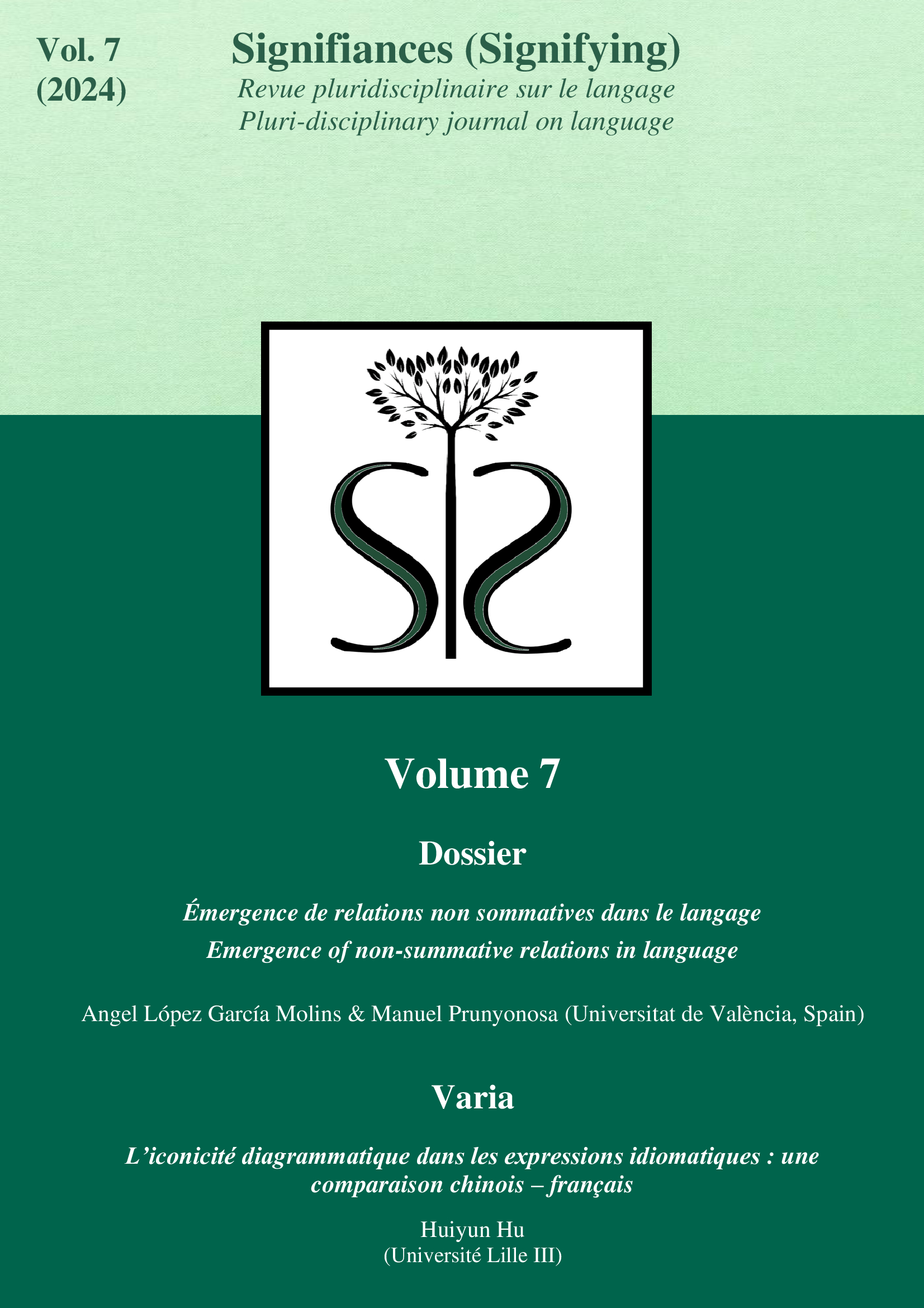Phonosymbolic Drive: More about Ergonomics in Language
DOI :
https://doi.org/10.52497/signifiances.v7i1.362Résumé
Phonosymbolism can be considered a universal phenomenon of language. Although the materiality of the linguistic sign is associated with its meaning with a high degree of conventionality, a substratum of iconism persists (and is even required) in the configuration of the expressive means of any natural language. Phonosymbolism is thus far from being an anecdotal fact, as has often been suggested. In the following study I will try to answer some questions that allow us to support this ‘need’ for an iconic link between expressive means and meaning, which could be characterized in terms of a ‘phonosymbolic drive’. Beyond the specific products that reveal ‘phonosymbolism’, the paper explores the cognitive processes, ergonomically based, that would explain these products.
Le phonosymbolisme peut être considéré comme un phénomène universel du langage. Bien que la matérialité du signe linguistique soit associée à sa signification avec un haut degré de conventionnalité, un substrat d’iconisme persiste (et est même requis) dans la configuration des moyens expressifs de toute langue naturelle. Le phonosymbolisme est donc loin d’être un fait anecdotique, comme on l’a souvent suggéré. Dans l’étude qui suit, je tenterai de répondre à quelques questions qui permettent d’étayer cette ‘nécessité’ d’un lien iconique entre moyens expressifs et sens, que l’on pourrait caractériser en termes de "pulsion phonosymbolique". Au-delà des produits spécifiques qui révèlent le « phonosymbolisme », l’article explore les processus cognitifs, basés sur l’ergonomie, qui expliqueraient ces produits.


